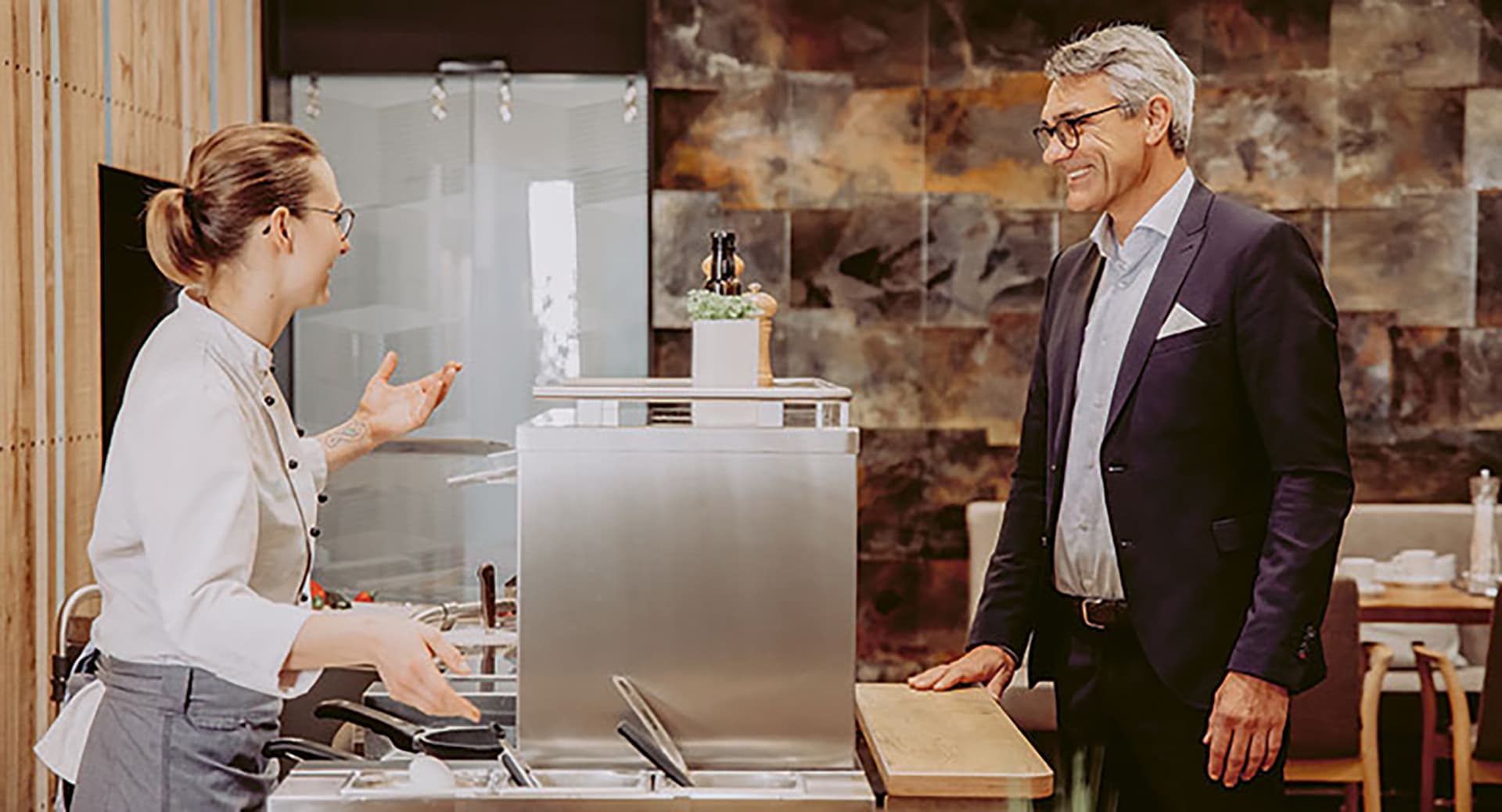
Forward-looking front cooking
You have to like people!
Bernd Trum has been the face of front cooking for many years. For him, it is not just a cooking method, but a philosophy he embraces and passes on every day. With his companies Frontcooking Network and "ICA Frontcooking Academy", he supports firms with the development and marketing of successful catering concepts. He trains chefs to turn front cooking into a perfect experience for guests.
Mr Trum, how did front cooking come about? How long has this form of food preparation been around?
Bernd Trum: The origins of front cooking go back to the 1950s. Back then, there was a trend that was reserved for haute cuisine: flambéing. This way of preparing food was practised in front of diners, and the principle of front cooking was born.
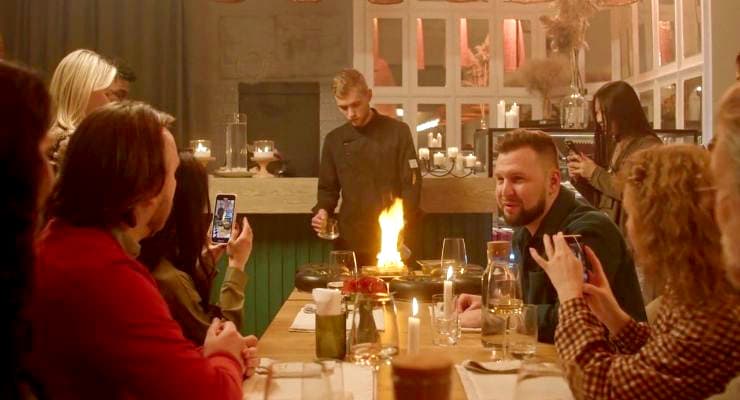
What is special about front cooking and what makes it so exciting for you?
Bernd Trum: Front cooking is extremely transparent – after all, diners can see exactly how the dishes they order are prepared. The act of preparing the food becomes something special and turns dining into a real experience.
However, front cooking is also a form of infotainment. Diners can see how their dishes are prepared and also learn information from the chef. Front cooking therefore involves the guest in the action and creates communication between diners and the chef.
Communication can be both verbal through dialogue and non-verbal through the use of cooking utensils. A good example of this is teppanyaki, an increasingly popular Japanese style of front cooking, in which the chef's flair turns the cooking process into an art form. Teppanyaki chefs create a breathtaking spectacle for diners through their masterful handling of ingredients and utensils. This makes waiting on food an experience in itself.
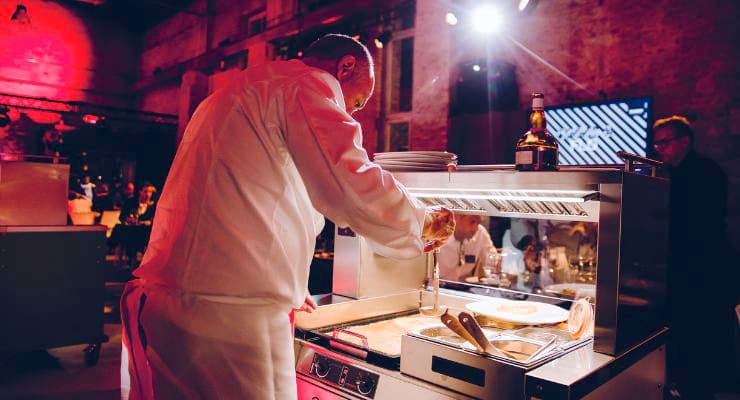
What type of catering is front cooking suitable for?
Bernd Trum: Front cooking has witnessed revolutionary growth in recent years. Just think of the food truck trend that had us all enthralled before the pandemic.
Front cooking is even on the rise the fast-food sector. However, this is one area in which it is especially difficult for front cooking to be successful. After all, it has become apparent that front cooking is only of limited suitability when it comes to the mass production of food. For restaurant concepts that are designed for the rapid preparation of lots of different dishes, front cooking can often be difficult to implement.
What equipment is required for front cooking?
Bernd Trum: It all depends on what you want to prepare. A pastarista needs completely different equipment to a teppanyaki chef. For me, the success of front cooking depends on the concept behind the station. My motto is: you always need a concept! And this concept has to meet three criteria:
- 1. Flow of goods: What products and actions are required? What recipes are used and how convenient is it?
- 2. Equipment: What is required? What is feasible? How often does the equipment need to be cleaned and serviced?
- 3. Trained staff Do they have rhetorical skills? Are they empathetic? Is their body language positive?
For me, the human factor is just as important as the technology.
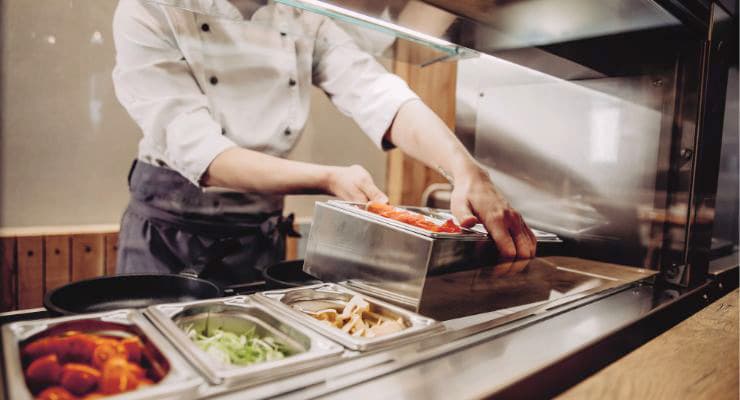
Which dishes are particularly suitable for this form of cooking?
Bernd Trum: The sky is the limit. As long as you keep to the principles of front cooking, all dishes are suitable. Meals like pasta, wok dishes, burgers, steaks and wraps are obvious candidates. But breakfast dishes like scrambled eggs or muesli counters are also great.
Preparing entire menus probably isn't the best idea given the length of time required. On the other hand, individual items of a grill platter such as poultry, steaks or prawns are an excellent choice.
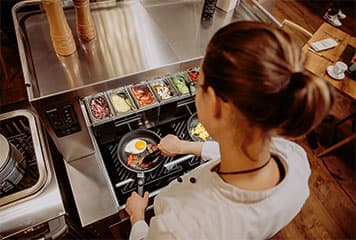
How did the coronavirus pandemic influence or change front cooking?
Bernd Trum: The entire catering industry was impacted by the pandemic more than practically any other. The restrictions forced restaurants to close their doors. But of course, if diners are not allowed to eat in, there is no point in front cooking. Many companies then tried to keep afloat by offering out-of-home and to-go concepts.
The pandemic also caused many workers in the catering industry to lose their jobs. Now that the pandemic is over, companies find themselves facing a tricky situation. The shortage of skilled workers is the biggest issue currently affecting the industry. However, this is precisely where front cooking can have a positive effect. In our academy, we train employees to independently run a front-cooking station in just five days. This helps to combat the current staff shortages. The training course teaches both technical and interpersonal skills. In other words, participants not only learn how to prepare food, but also how to interact with guests. They don't have to be chefs, but they should enjoy working with people.
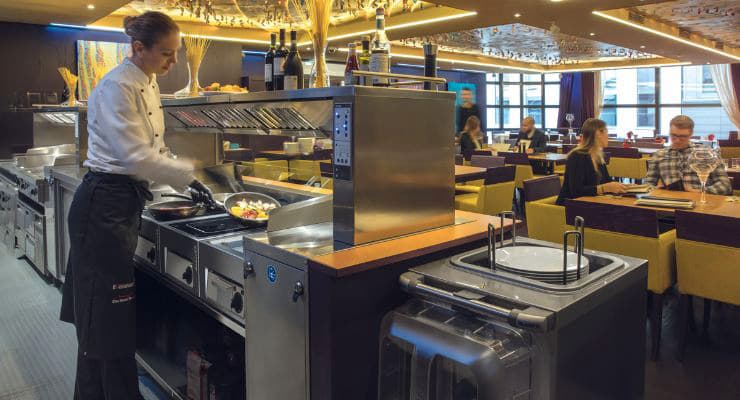
What makes front cooking so popular?
Bernd Trum: There are three main reasons. Firstly, the communication between guests and the person behind the station. Secondly, the opportunity to watch and experience food being prepared in person. And thirdly, the flair and skill of the person operating the station. These are the main success factors that turn a front-cooking station into an experience.
For me, the communication or interpersonal skills of the person operating the station are particularly important. Talking to guests, responding to their requests, preparing something for them while they are at the station and meeting their wishes – this creates an emotional bond with diners. And for me, this is front cooking par excellence.
Thank you for the fascinating interview, Mr Trum!

Bernd Trum, academy director. The show and TV chef at ICA Frontcooking Academy knows that being a good chef is just one ingredient in the recipe. Many guests also want an emotional experience and entertainment. He teaches the art of front cooking with concept as an in-house training course or at the training centre in Limburg.
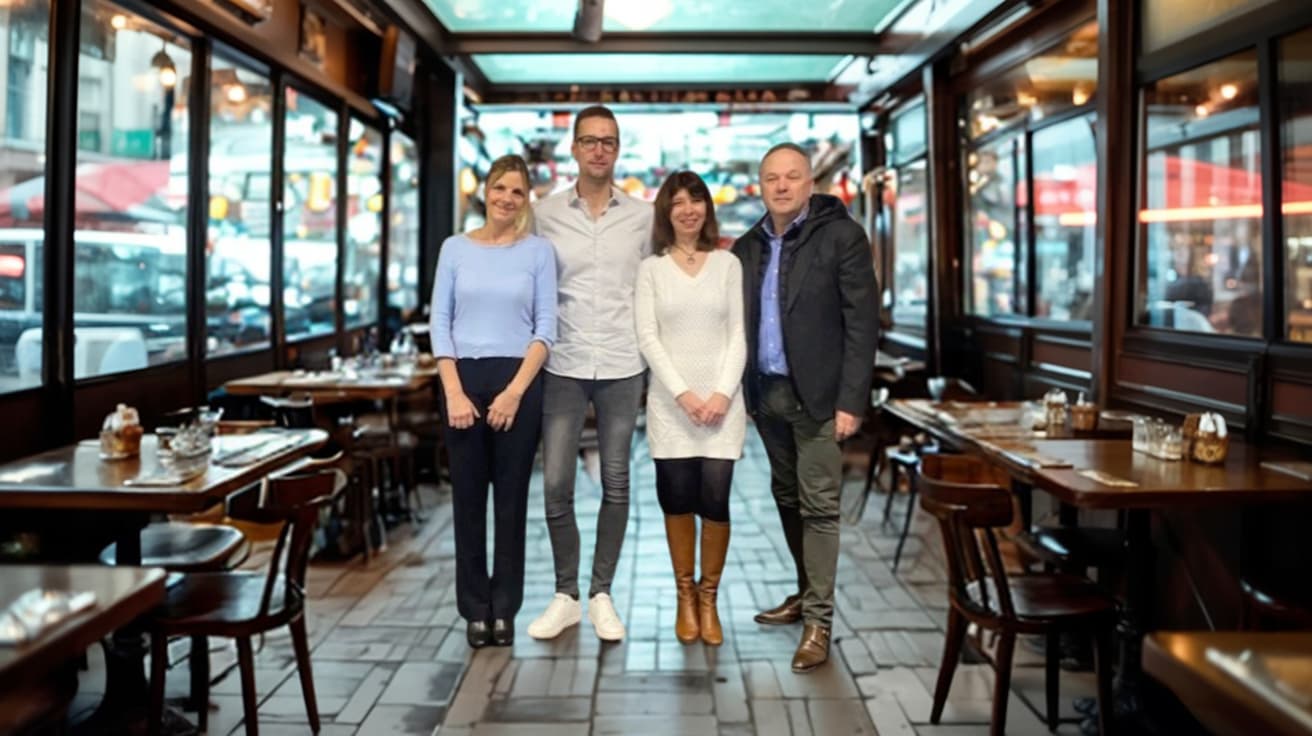 A portrait of B.PRO France
A portrait of B.PRO FranceHow does B.PRO work in one of the most demanding markets in Europe? General Manager Daniel Rewell offers insights into key product focuses, customer structures and the most important development topics.
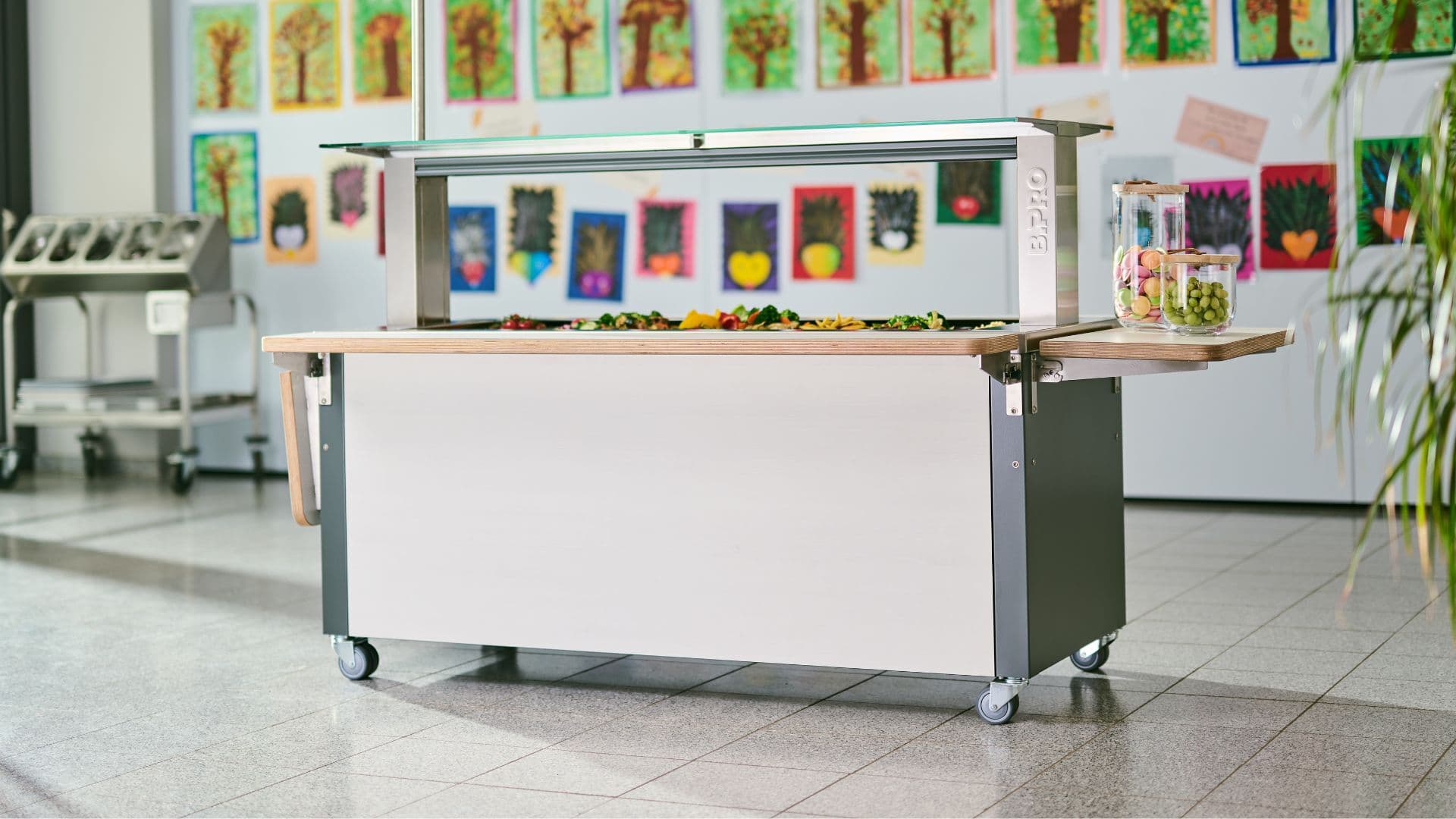 New buffet products
New buffet productsA convincing presentation, flexible functions and accessibility: Buffets have to meet a lot of requirements today. This is precisely why B.PRO has comprehensively revised the BASIC LINE - from optimised cooling technology to new solutions for the youngest of guests.
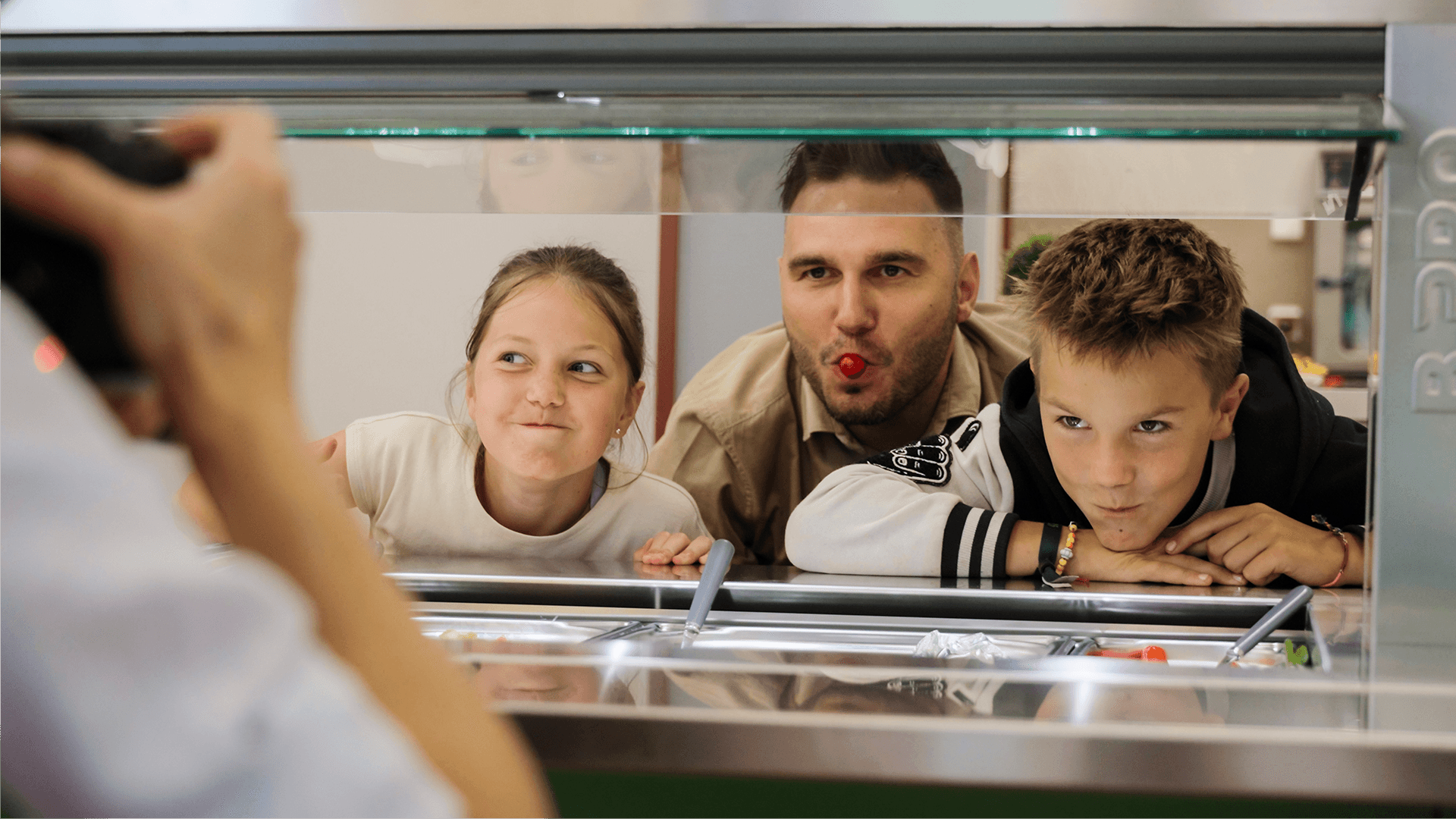 "Besseresser" (KiKA) donation
"Besseresser" (KiKA) donationAs part of the TV series besseresser Kids - Lege packt's an (KiKA), B.PRO donated modules to the Wilhelm-Lehmbruck-Schule Dorsten-Östrich. The television project impressively demonstrated how commitment and technical expertise can work together to create real educational added value.
